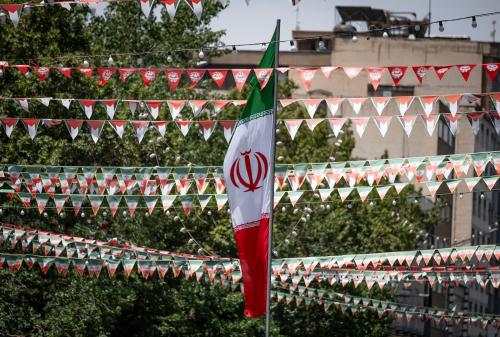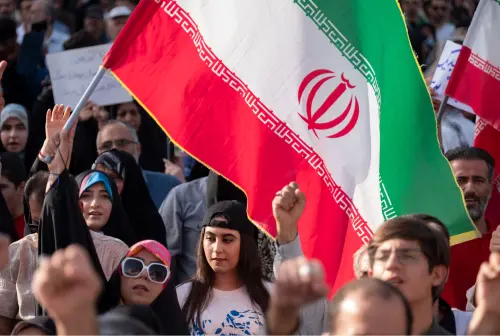So how committed is the United States to the war in Afghanistan, and more generally to the security of South Asia?
Pakistani friends understandably have their doubts — going back not only to President Obama’s Dec 1 speech last year when he spoke of beginning a withdrawal of U.S. troops from Afghanistan by July 2011, but to previous difficult periods when America’s commitment to South Asia wavered.
Try as they might, U.S. cabinet secretaries and battlefield commanders cannot put this issue to rest. In recent interviews, Gen David Petraeus tried again, from his new perch as commander of the International Security Assistance Force (ISAF) in Afghanistan, underscoring the need for patience and implying that American resolve to succeed in this effort would go past next year.Yet in the American press, and in South Asia, his words have also led to yet another round of debate about what Washington really intends. This confusion is not surprising; after all, it was just a few months ago when a new book by Jonathan Alter quoted Vice President Biden as predicting (wrongly, in my view) that lots of U.S. troops would be leaving Afghanistan by next summer.
In fact, President Obama has been trying to have it both ways to an extent. He wants to suggest staying power — but also wants to reassure Americans that the war will not last forever, and wants to signal to Afghan officials that they must do their part to accelerate reforms if they want to count on the United States for the long haul.
So the Afghanistan war is vital, but we are already also planning to start ending it by a certain date. The American troop buildup is large and fast, but also temporary. The NATO mission in Afghanistan is ambitious, but also limited in scope. These conflicting ideas may not be contradictions, but they certainly contain a good deal of policy tension within them — and they certainly can lead to confusion.
I believe the various ideas can be reconciled with each other; indeed, I believe one can even sketch out the rough plan for reducing U.S. and NATO forces in Afghanistan over the next few years based on what is publicly known about the Afghan-ISAF military strategy. But before attempting that, it is also worth revisiting some of the other comments administration figures have made about the war’s likely longevity to add further texture to the discussion. Consider:
— “We will help by working with our Afghan partners to strengthen institutions at every level of Afghan society so that we don’t leave chaos behind when our combat troops begin to depart … the additional American and international troops will allow us to accelerate handing over responsibility to Afghan forces and allow us to begin the transfer of our forces out of Afghanistan in July of 2011.
“Just as we have done in Iraq, we will execute this transition responsibly, taking into account conditions on the ground.” (Secretary of State Hillary Clinton, testimony before the Senate Foreign Relations Committee, Dec 3, 2009.)
— “Beginning to transfer security responsibility to the Afghans in summer 2011 is critical — and, in my view, achievable. This transfer will occur district by district, province by province, depending on conditions on the ground … Even after we transfer security responsibility to the Afghans and draw down our combat forces, the United States will continue to support their development as an important partner for the long haul.
“We will not repeat the mistakes of 1989, when we abandoned the country only to see it descend into civil war, and then into Taliban hands….” (Secretary of Defence Robert Gates, Senate Foreign Relations Committee, Dec 3, 2009.)
— “…beginning in 2011, July, we will start bringing those troops down and turning over more and more responsibility to Afghan security forces that we are building up. But we are not suddenly, as of July 2011, finished with Afghanistan.” (President Barack Obama, May 12, 2010, joint press conference with President Hamid Karzai, Washington, DC.)
The most logical way to make sense of all this confusion coming out of Washington, some of it perhaps deliberate and some inadvertent, is as follows. First, President Obama does intend a gradual, careful drawdown of U.S. forces from Afghanistan beginning next summer. He does not intend a precipitate withdrawal.
Second, as Afghan forces improve over the coming year, the gradual drawdown should in fact be possible — as long as its pace remains flexible (and probably quite slow at first).
Third, my calculations suggest that we might still need 80,000 or more U.S. troops in Afghanistan at the end of 2011, more than 50,000 at the end of 2012, and perhaps half that number still at the end of 2013 — and I have no reason to believe that the White House or Pentagon disagrees with this assessment.
Fourth, however, should we collectively fail to achieve any substantial progress in the stabilization effort between now and July, all bets are off. Mr Obama reserves the right to consider a Plan B that might involve faster reductions in American combat power as we recognise that the original goals of the mission have become unattainable.
That last possibility is unlikely, however. As commander in chief, Barack Obama has declared South Asia his top national security priority, and he has now presided over a tripling of U.S. military personnel in Afghanistan since entering the Oval Office. These are enormous indications of his resolve and are too frequently under-appreciated. The smart money is on a long, patient American commitment to this war and this region for many years to come.
The Brookings Institution is committed to quality, independence, and impact.
We are supported by a diverse array of funders. In line with our values and policies, each Brookings publication represents the sole views of its author(s).



Commentary
Op-edIn For the Long Haul
August 19, 2010